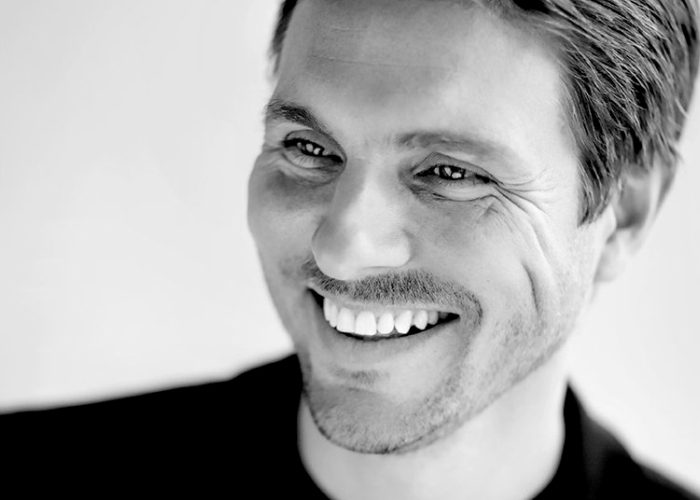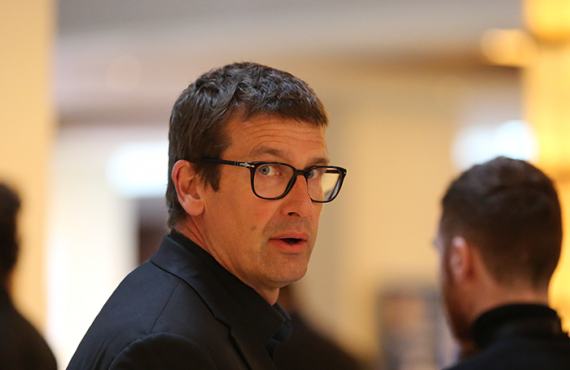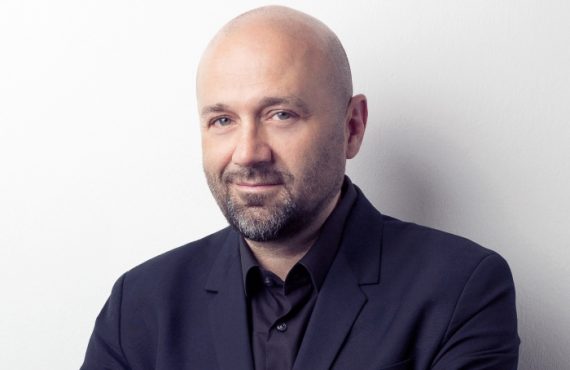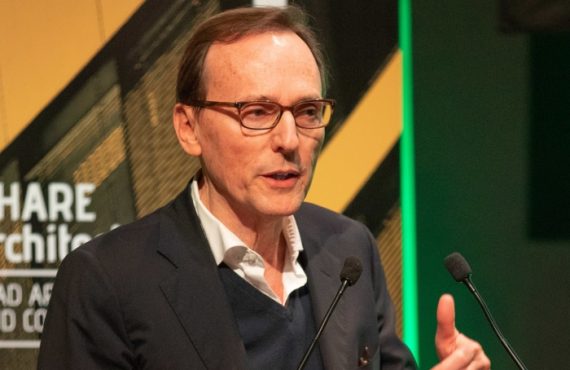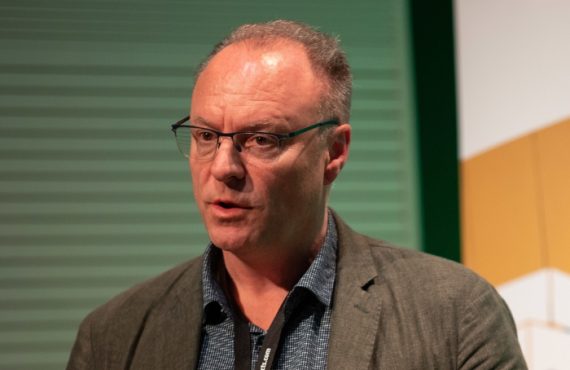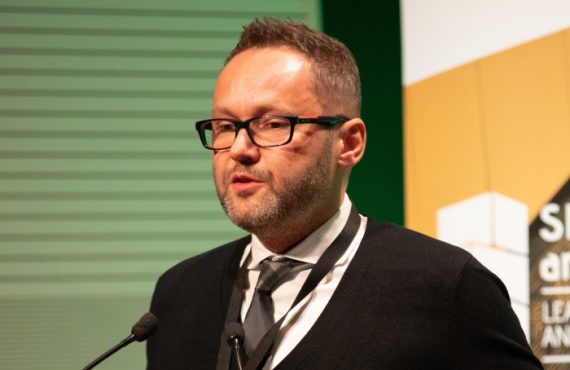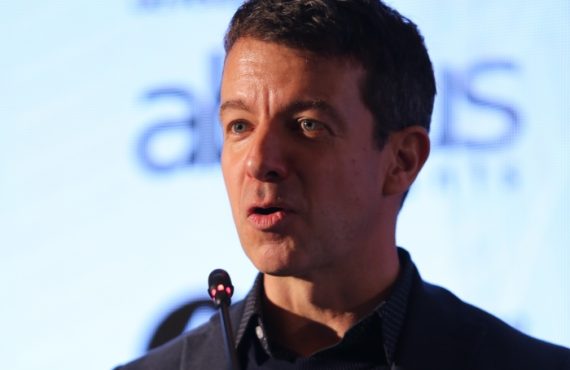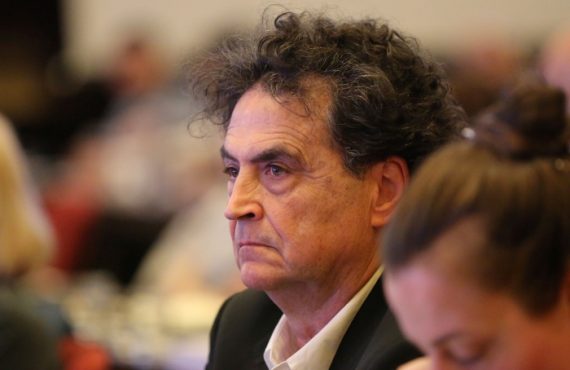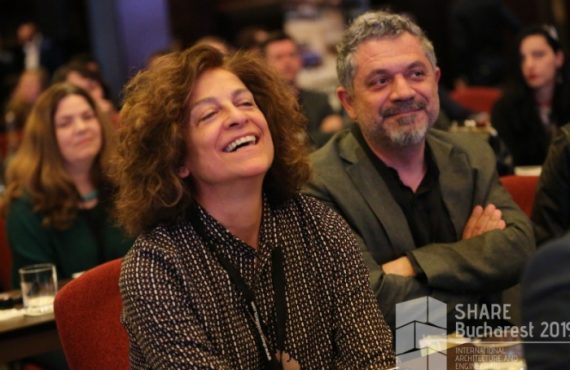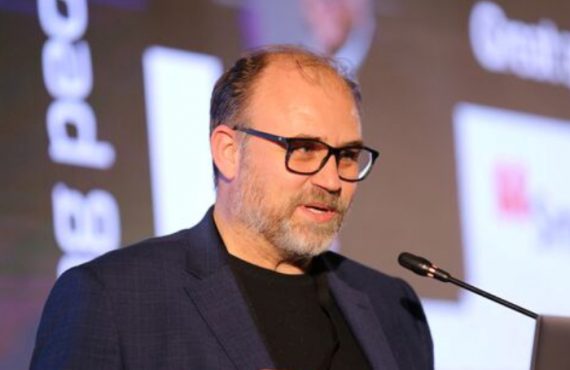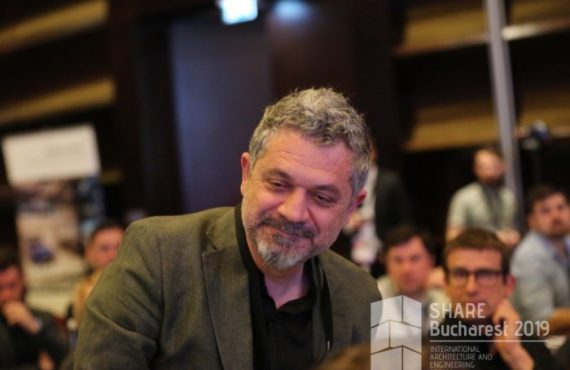If you don’t have social skills – the ability to work in a group and be open to other people’s views and opinions – you won’t work in a group like Snøhetta. You can be as good an architect you want but if you lack social abilities, this is not a smart place to start working at.
Martin Gran: Design as a discipline at Snøhetta is relatively new. It’s been going on for ten years and Snøhetta has a history of thirty years. We started with graphic design, product design and also digital application design since we wanted to use the competences of making great concepts in different disciplines than architectural, landscape and interior. Snøhetta as a multidisciplinar practice by the notion that you can not take the architecture out of the landscape. You cannot take the building out of the premises its on. So, in the beginning, we wanted the landscape architects to be involved in the creation of not only a building’s concept, but also in following the project because I think we are and have to be equally important when you are building something in a context. Thirty years ago landscape architects were pretty much asked to come in the late phases of a project: sort of to fix the building site and its surroundings. But we want all involved from the beginning. That interior architecture was treated as on same level; that interior architects asked to work with us from day one and then we expanded that into graphic design, product design and branding. We did this with the same belief that everything is connected and combined, so we have to make holistic projects in order for them to really change the way we interact with spaces and forms.
Andreea Robu-Movila: What was your role in the firm when you have arrived at Snøhetta?
M.G.: I started learning social sciences, psychology and sociology and I’m interested in what are the influences that determine our change in behavior. Having worked in this industry for more than twenty years I realized that the tangible reality affects as more than the spoken or visualized world, intuition is more effective than brut facts and tacit knowledge is more effective than information in it self. For instance, a picture of this table will affect us, but the table in itself affects us much more. So how can we use architects’ competence to change behavior more than the building in itself does? How can we use architectural tools to make graphic design? How can we make architectural tools come up with better products for people? How can architects be good advocates of web design and digital applications? Since we’re coming from handcraft and construction, communication, PR, advertising and branding, becomes very metaphysical and not credible. You have to have a communication channel to express your thoughts and your behavioral attention and hopefully gain some kind of behavioral change. But architects are about bits and mortar and wood: the things that surround us. That was my interest: to see how you can look at the tangibles in the world in order to affect us as human beings in the society. When we connect all these disciplines into one, when we use architecture together with web developers in order to create projects, there is an interesting mix between digital and analogue.
A.R.M.: How has your team role changed from the beginning until now?
M.G.: It’s been a journey as Snøhetta is more of a collective group which is the basis of an accessible structure that is open to other thoughts, opinions as well as other disciplines. In the beginning we needed to build up knowledge about what graphic designs stands for. Graphic design is not about making wrappings for architectural projects: it is actually an important tool for creating some means of making internally or externally changes. That competence has now grown to be more of a natural aspect of Snøhetta, but it’s always like that with new inventions in any organization.
A.R.M.: Is it necessary to reinvent yourself from time to time in order to remain relevant?
M.G.: We think you constantly have to reinvent yourself. If you don’t adapt, you’ll become at best irrelevant but change for the sake of change is no good. Why would you ever want to change something that is actually working? Always asking questions about how things can be done better, how we can think differently is essential. You get used to your patterns and you think that what worked in the past would also works in the present, so the more experience you get the harder it is to break out. I think that in order to make sure you are challenging yourself you need to have a dialogue with people in different positions. Getting back to us, we celebrate having these different disciplines because a graphic designer would come up with conceptual idea for an architectural project which an architect would have never dared to think of.
A.R.M.: How is Snøhetta organized as a team? What is the mechanism?
M.G.: You can call it more like an organism. We are a private company and we have our structures in order to run our business. We are very much built upon the Nordic values.
A.R.M.: What are these values?
M.G.: It is a bit hard to define what the Nordic model is. We think it has a lot to do with modern democracy, transparency and equality, values which enable every person to have a validated voice inside the society. Those drives are important to how we convey not only our organization’s spirit, but also the resulted design. We are trying to encourage generosity in our own firm so that everyone has a voice and equal worth even if you are a 75 year old architect or a 21 year old intern in the financial department.
A.R.M.: Do you have separate departments for each domain?
M.G.: We have groups with different disciplines and we lay out our office space in such a way that they are randomly mixed.
A.R.M.: This enhances communication.
M.G.: There is no graphic design corner or interior architects’ row. If you’re a founding partner, you will be randomly put somewhere every second year so that we don’t create any subgroups. Everything changes every two years.
A.R.M.: Randomly?
M.G.: Yes, randomly. This way everyone knows that it’s no certainty whether you’ll be sitting next to a graphic designer or a master plan architect. I think it is important to convey the message that everyone is equal and you should debate your conceptual ideas with people outside of your own discipline. That is the only way we can challenge ourselves to ask questions if we want to change. This reinvention of ourselves is very similar to the way we use our interiors. I would say that we use our interior architecture plans as tools for our organizational model.
A.R.M.: What are the main values of Snøhetta? What is the recipe for its success?
M.G.: We try not to define values at Snøhetta. We want everyone to find their own values because we don’t want them to acquire a certain corporate identity. We want them to be who they are and have the best conditions as possible.
A.R.M.: So the recipe consists in diversity and creativity!
M.G.: Yes, exactly: so you can be yourself and as best as you can be in order to use your whole personality in the process of creation.
A.R.M.: Do Snøhetta market themselves ?
M.G.: Yes, we have a marketing department and we have some brand managers at Snøhetta. Their sole task is to communicate and build Snøhetta as a brand even if we have landscape projects, opera houses, museums or master planning. Their work is only to promote the projects but they could be a part of the team creating concepts by setting this trans-disciplinary approach.
A.R.M.: That explains your diverse portfolio.
M.G.: Yes. We think we can create anything that can improve social interactions.
A.R.M.: What is the first step in branding an architecture firm?
M.G.: Define who you are and look inwards – make an introspective process and forget about target groups and what other competitors are doing: look inwards and find out who you are, what your main attributes are and what you believe in. When you have got that, conceptualize it so that it’s easier for others to understand what you mean.
A.R.M.: Others fields consider that we are ubiquitous and take many more roles than we can handle. Are there any borders to architects?
M.G.: I think we tend to say we don’t choose the projects: we choose types of clients. So if we find certain people that are wants to be potential clients and have good means for a proper conservation of the design, we can basically do anything. But as an architectural and design firm where we celebrate special craftsmanship, we do not want to involve too much in application design that has a weak relevance to our heritage. We started with architecture and landscape and we have a history of creating architectural design in connection to the surroundings, thus enabling some sort of social interaction. We have some sort of a guide to indicate when things are relevant or not, but we do like to do anything so we get tempted, every time there is an opportunity. But still, I think architects really do what architects and designers should do: create space and improve social interactions. When we are working on our projects, when we rehearse and are in a creative process we urge the architect to play the role a graphic designer and the graphic designer to be an architect. We want you to leave your profession and shift position. Your pride and responsibillity for a profession often stop you from being creative. We want you to be the whole person at wortk, not just the archtiect. Let’s say we try to get the musician out of the engineer. We call it transpositioning. It’s like a very professional orchestra where the players shift their instruments. So if you are a violin player and I play the trumpet, we can change our instruments and learn how difficult it is to play the violin or the trumpet.
A.R.M.: But when it comes to a concert you should do your job!
M.G.: Yes, the trumpet player should have the trumpet back. If not, it is going to be a lousy concert.
A.R.M.: Objectively, what is distinctive in the architects’ way of thinking?
M.G.: I think any craftsmanship and competence driven industry has some sort of intellectual drive to try to solve whatever problem at hand. I think architects as craftsmen have the competence of creating diverse projects and acquired a very generic relevance of being the soul of some very complex situations. Architects are humans and so are psychologists, therefore I don’t think you can label architects or graphic designers as being more special than any other professionals in the world.
A.R.M.: My question came in the context of the intelligent machines that can be trained to solve problems, even in the architectural field. Can artificial intelligence pick up where architects left off and do more than they can?
M.G.: I think artificial intelligence will be a supplement for us to become better professionals. What artificial intelligence lacks now is intuition and consciousness. Using intuition when solving problems is probably the most intelligent thing we do and I don’t think artificial intelligence will be a real competitor in this field.
A.R.M.: What is your main source of happiness working in the field of architecture?
M.G.: I think the main source of happiness in working with architects is making mistakes and failing. When we allow ourselves to make mistakes fantastic things happen! When we laugh is very, very often connected to someone’s mistakes, even if it’s behavior or talking. In working processes with architectural designers if you don’t laugh and enjoy yourself, I would dare to say that innovation won’t happen. Creativity often arises when people are making mistakes, so celebrating mistakes is maybe the most fulfilling source of happiness in our projects.
A.R.M.: What are the qualities you think young people should invest?
M.G.: First and foremost, social competence! If you don’t have social skills – the ability to work in a group and be open to other people’s views and opinions – you won’t work in a group like Snøhetta. You can be as good an architect you want but if you lack social abilities, this is not a smart place to start working at.
A.R.M.: How would you describe Snøhetta’s philosophy?
M.G.: Openness.
A.R.M.: Thank you very much for your time!

Martin Gran – Partner in An Award Winning, Transdisciplinary Design- and Architecture Office, Snøhetta, Norway
Martin Gran graduated from the University of Bergen, the Sociology, Psychology, Organization and Managament Section, as well as the University of Oslo, Psychology, Brand Managment within the Norwegian School of Management.
Martin is Managing Director and Partner of Snøhetta. Before that, he was Scandinavian Design Group’s New Business Director and Strategic Advisor with responsibility for major brands in Europe and the Nordic region. In 2006 he worked at McCann Erickson New York with clients like Master Card and Air Canada.From 2000 to 2003, Martin was an Account Director at Leo Burnett Advertising Agency.
Snøhetta is an award-winning international Oslo- and New York-based architecture firm, which has become one of the most discussed and sought-after practices today, due to the self-defined trans-disciplinary process in which different professionals – from architects to visual artists, philosophers to sociologists – exchange roles in order to explore differing perspectives without the prejudice of convention. Within their office, Snøhetta emphasizes an open exchange between roles and disciplines – architects, landscape architects, interior architects, and graphic designers collaborate in an integrated process, ensuring multiple voices are represented from the onset of the project.
Formed in 1989 in Oslo, Norway, a corner-stone in Snøhetta’s philosophy is a deep-seated respect for diverse backgrounds and cultures and it is reflected by the fact that the practice is composed of designers, architects and landscape architects from around the world. Today, Snøhetta has grown to become an internationally renowned practice of architecture, landscape architecture, interior architecture, product- and graphic design, with more than 240 employees from 32 different nations.
Snøhetta is currently involved in numerous projects in Europe, Asia, Oceania and the Americas. Working globally gives each designer valuable cultural and economic insight and creates the foundation of Snøhetta’s continuously evolving professional knowledge base.

